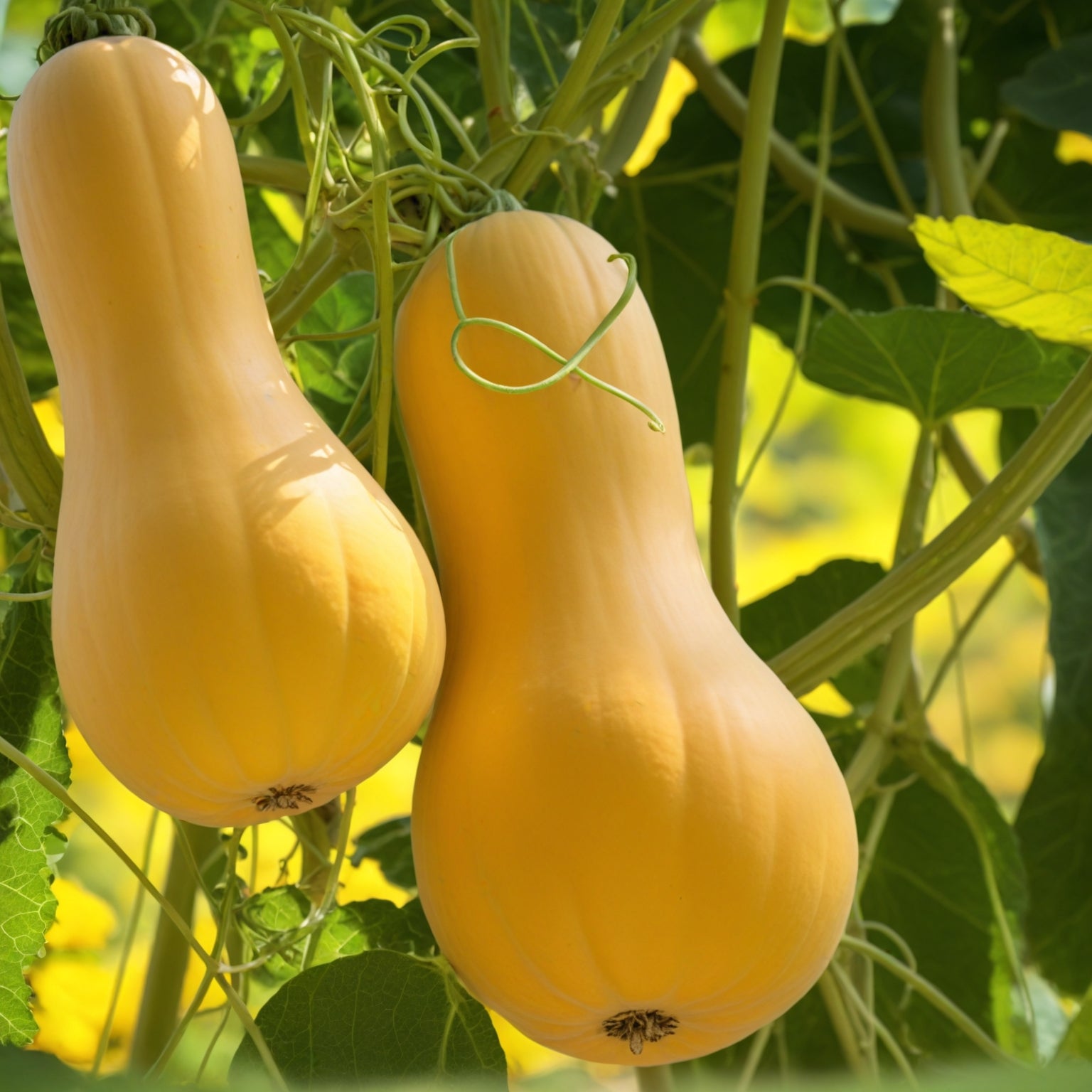- Hardiness Zone: 3-11 Annual
Seed Depth: 1–1.5 inches
Seed Spacing: 24–36 inches
Row Spacing: 6–8 feet
Sunlight: Full sun
Days to Sprout: 7–14 days
Days to Maturity: 95–105 days
Growth Habit: Sprawling vine
Sunlight: Requires full sun, with at least 6–8 hours of direct sunlight daily.
Soil Type: Prefers well-drained, fertile soil with a pH of 6.0–7.5. Adding compost or organic matter improves growth.
When to Plant: Sow seeds directly outdoors after the last frost when soil temperatures reach at least 70°F.
Direct Sowing: Plant seeds 1–1.5 inches deep, spacing them 24–36 inches apart in rows 6–8 feet apart. Alternatively, plant in hills with 2–3 seeds per hill and thin to the strongest seedling.
Indoor Sowing: Start seeds indoors 3–4 weeks before the last frost for an earlier harvest. Transplant carefully to avoid root disturbance.
Succession Planting: Not typically needed; a single planting yields a long harvest window.
Watering: Water deeply and consistently, keeping the soil evenly moist but not soggy. Avoid overhead watering to reduce disease risk.
Fertilizing: Apply a balanced fertilizer at planting and switch to a phosphorus-rich fertilizer during flowering and fruiting stages.
Pruning: Trim excessive vines to focus energy on fruit development.
Pest and Disease Control: Monitor for squash bugs, vine borers, and powdery mildew. Use organic treatments and row covers as necessary.
When to Harvest: Harvest when the skin is tan, firm, and cannot be easily punctured with a fingernail, typically 95–105 days after planting. The stem should be dry and woody.
How to Harvest: Use a sharp knife to cut squash from the vine, leaving 2–4 inches of stem attached to extend storage life. Handle carefully to avoid bruising.
Seed Collection: Scoop seeds from fully ripened squash, rinse, and dry thoroughly.
Storing Seeds: Store seeds in an airtight container in a cool, dry place.
Why You’ll Love It
Butternut Squash is a reliable heirloom that’s beloved for its smooth texture, rich flavor, and excellent storage life. Each vigorous vine produces multiple uniform fruits with creamy orange flesh and a sweet, nutty taste that only gets better after curing. Ideal for fall harvests and winter meals, butternut squash is easy to grow, highly productive, and a favorite among gardeners who love long-lasting, nutrient-dense vegetables.
Plant Characteristics
Height: Vines spread 6–10 feet
Growth Habit: Long trailing vines with sprawling habit
Fruit Type: Tan, bell-shaped squash with small seed cavities and dense flesh
Days to Maturity: 95–110 days
Hardiness: Warm-season annual
Flavor and Culinary Uses
Flavor: Sweet, nutty, and rich — improves after curing
Culinary Uses: Excellent for roasting, mashing, baking, soups, purees, and casseroles. Stores for months in a cool, dry place.
Companion Planting Tips
Good Companions: Corn, beans, marigolds, and nasturtiums
Avoid Planting Near: Potatoes or competing vining crops
Bonus Benefit: Long shelf life — enjoy your harvest throughout the winter
Common Issues and Solutions
Powdery Mildew: Plant in full sun with good spacing for airflow — water at the base, not overhead
Fruit Rot: Keep ripening squash off the soil using mulch or boards
Poor Pollination: Plant multiple squash or attract pollinators with companion flowers like zinnias or cosmos
Seeds Per Packet
| 3g | Approximately 30 |
| 5g | Approximately 50 |
| 10g | Approximately 100 |
| 15g | Approximately 150 |
Why You’ll Love It
Butternut Squash is a reliable heirloom that’s beloved for its smooth texture, rich flavor, and excellent storage life. Each vigorous vine produces multiple uniform fruits with creamy orange flesh and a sweet, nutty taste that only gets better after curing. Ideal for fall harvests and winter meals, butternut squash is easy to grow, highly productive, and a favorite among gardeners who love long-lasting, nutrient-dense vegetables.
Plant Characteristics
Height: Vines spread 6–10 feet
Growth Habit: Long trailing vines with sprawling habit
Fruit Type: Tan, bell-shaped squash with small seed cavities and dense flesh
Days to Maturity: 95–110 days
Hardiness: Warm-season annual
Flavor and Culinary Uses
Flavor: Sweet, nutty, and rich — improves after curing
Culinary Uses: Excellent for roasting, mashing, baking, soups, purees, and casseroles. Stores for months in a cool, dry place.
Companion Planting Tips
Good Companions: Corn, beans, marigolds, and nasturtiums
Avoid Planting Near: Potatoes or competing vining crops
Bonus Benefit: Long shelf life — enjoy your harvest throughout the winter
Common Issues and Solutions
Powdery Mildew: Plant in full sun with good spacing for airflow — water at the base, not overhead
Fruit Rot: Keep ripening squash off the soil using mulch or boards
Poor Pollination: Plant multiple squash or attract pollinators with companion flowers like zinnias or cosmos
Seeds Per Packet
| 3g | Approximately 30 |
| 5g | Approximately 50 |
| 10g | Approximately 100 |
| 15g | Approximately 150 |









Share and get 15% off!
Simply share this product on one of the following social networks and you will unlock 15% off!